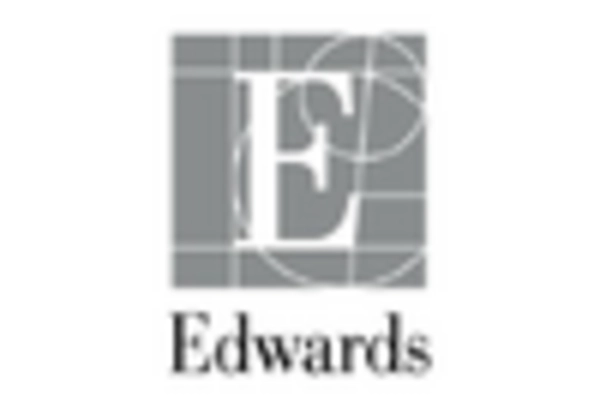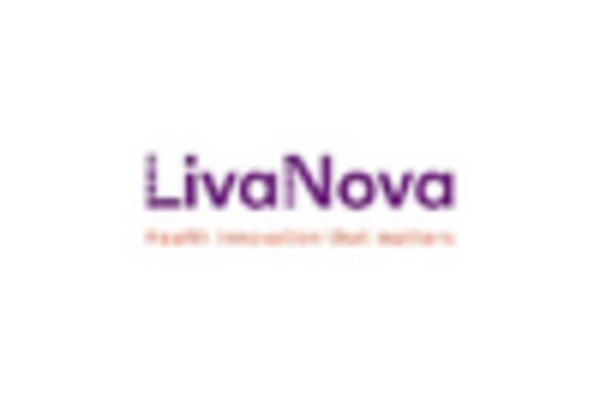Rising Healthcare Expenditure
In the US, healthcare expenditure has been on an upward trajectory, which positively influences the heart valves market. With an increase in spending, hospitals and healthcare facilities are more likely to invest in advanced heart valve technologies and treatments. The US healthcare expenditure is projected to reach $6 trillion by 2027, reflecting a growing commitment to improving patient outcomes. This financial investment allows for the adoption of cutting-edge heart valve solutions, including transcatheter aortic valve replacement (TAVR) and other minimally invasive techniques. As healthcare providers seek to enhance their service offerings, the heart valves market stands to benefit from this trend, as more patients gain access to innovative treatments.
Technological Innovations in Heart Valve Devices
The heart valves market is significantly influenced by ongoing technological innovations in heart valve devices. Advancements in materials and design have led to the development of more durable and biocompatible heart valves, which enhance patient outcomes. For instance, the introduction of tissue-engineered valves and the use of advanced imaging techniques for precise placement are transforming the landscape of heart valve interventions. These innovations not only improve the efficacy of treatments but also reduce recovery times for patients. As a result, the heart valves market is likely to expand as healthcare providers increasingly adopt these state-of-the-art technologies to meet the growing demand for effective heart valve solutions.
Increased Awareness and Screening for Heart Conditions
There is a growing awareness of heart conditions among the US population, which is driving demand in the heart valves market. Public health campaigns and educational initiatives have led to increased screening and early diagnosis of heart valve diseases. As more individuals become aware of the symptoms and risks associated with heart conditions, they are more likely to seek medical attention. This trend is reflected in the rising number of echocardiograms and other diagnostic procedures performed annually. Consequently, the heart valves market is poised for growth as early detection leads to timely interventions, ultimately improving patient outcomes and increasing the demand for heart valve treatments.
Regulatory Support for Innovative Heart Valve Solutions
The heart valves market is benefiting from regulatory support aimed at facilitating the approval of innovative heart valve solutions. Regulatory bodies in the US are increasingly streamlining the approval process for new devices, which encourages manufacturers to invest in research and development. This supportive environment fosters innovation, allowing for the introduction of advanced heart valve technologies that can address unmet medical needs. As a result, the heart valves market is likely to see a surge in new product launches, enhancing competition and providing patients with a wider array of treatment options. This regulatory landscape is crucial for the continued growth and evolution of the heart valves market.
Aging Population and Increased Incidence of Heart Disease
The heart valves market is experiencing growth driven by the aging population in the US, which is increasingly susceptible to cardiovascular diseases. As individuals age, the risk of heart valve disorders rises, leading to a higher demand for heart valve replacements and repairs. According to recent data, approximately 1 in 4 adults over the age of 65 suffers from some form of heart disease, which significantly impacts the heart valves market. This demographic shift is expected to continue, with projections indicating that by 2030, the number of older adults will reach 73 million. Consequently, healthcare providers are focusing on innovative solutions to address the needs of this population, thereby propelling the heart valves market forward.

















Leave a Comment